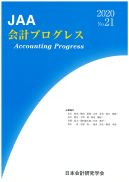Volume 2006, Issue 7
Displaying 1-5 of 5 articles from this issue
- |<
- <
- 1
- >
- >|
-
2006Volume 2006Issue 7 Pages 1-17
Published: 2006
Released on J-STAGE: September 01, 2021
Download PDF (349K) -
2006Volume 2006Issue 7 Pages 18-31
Published: 2006
Released on J-STAGE: September 01, 2021
Download PDF (347K) -
2006Volume 2006Issue 7 Pages 32-45
Published: 2006
Released on J-STAGE: September 01, 2021
Download PDF (328K) -
2006Volume 2006Issue 7 Pages 46-58
Published: 2006
Released on J-STAGE: September 01, 2021
Download PDF (342K) -
2006Volume 2006Issue 7 Pages 59-71
Published: 2006
Released on J-STAGE: September 01, 2021
Download PDF (346K)
- |<
- <
- 1
- >
- >|
